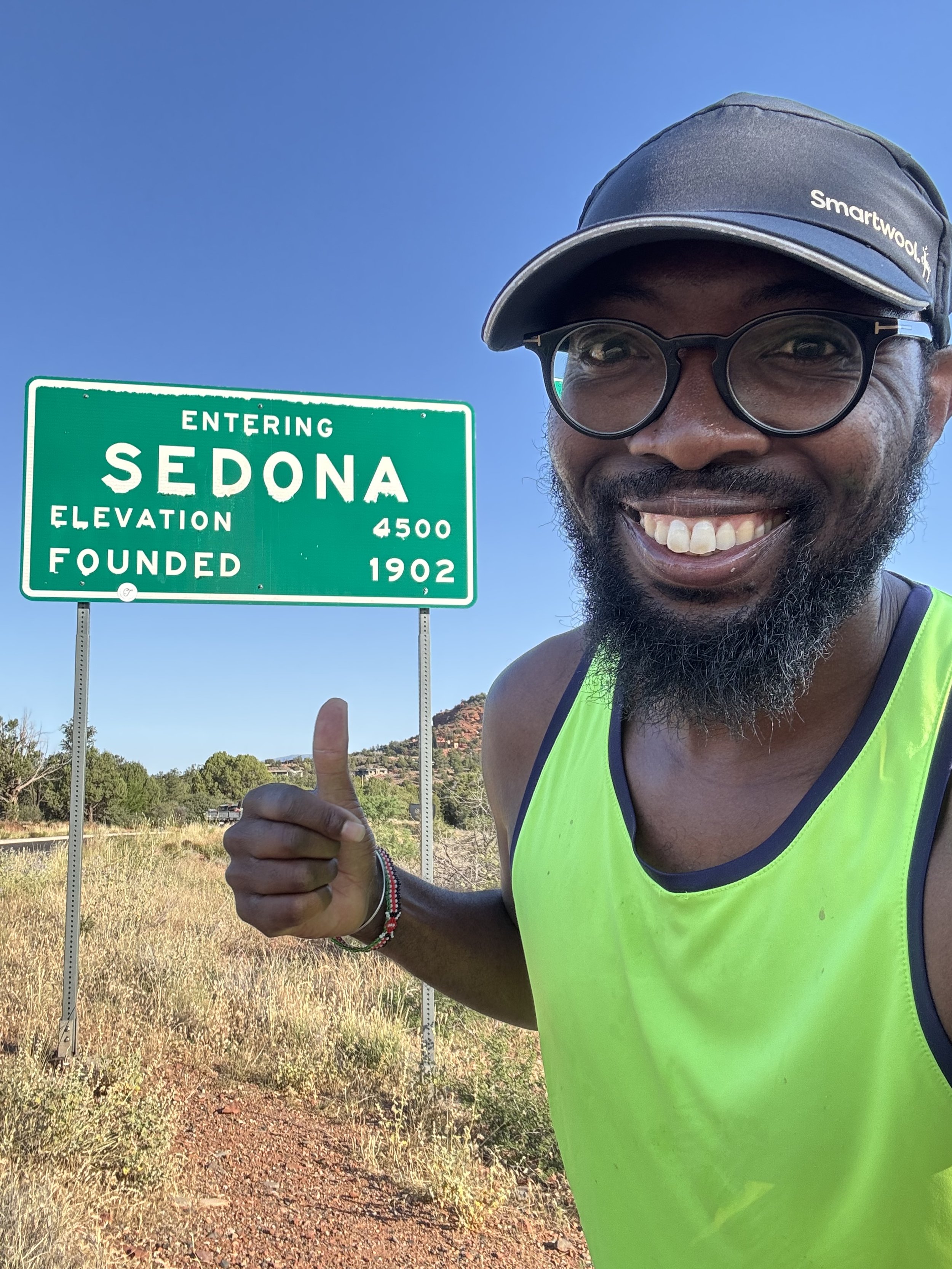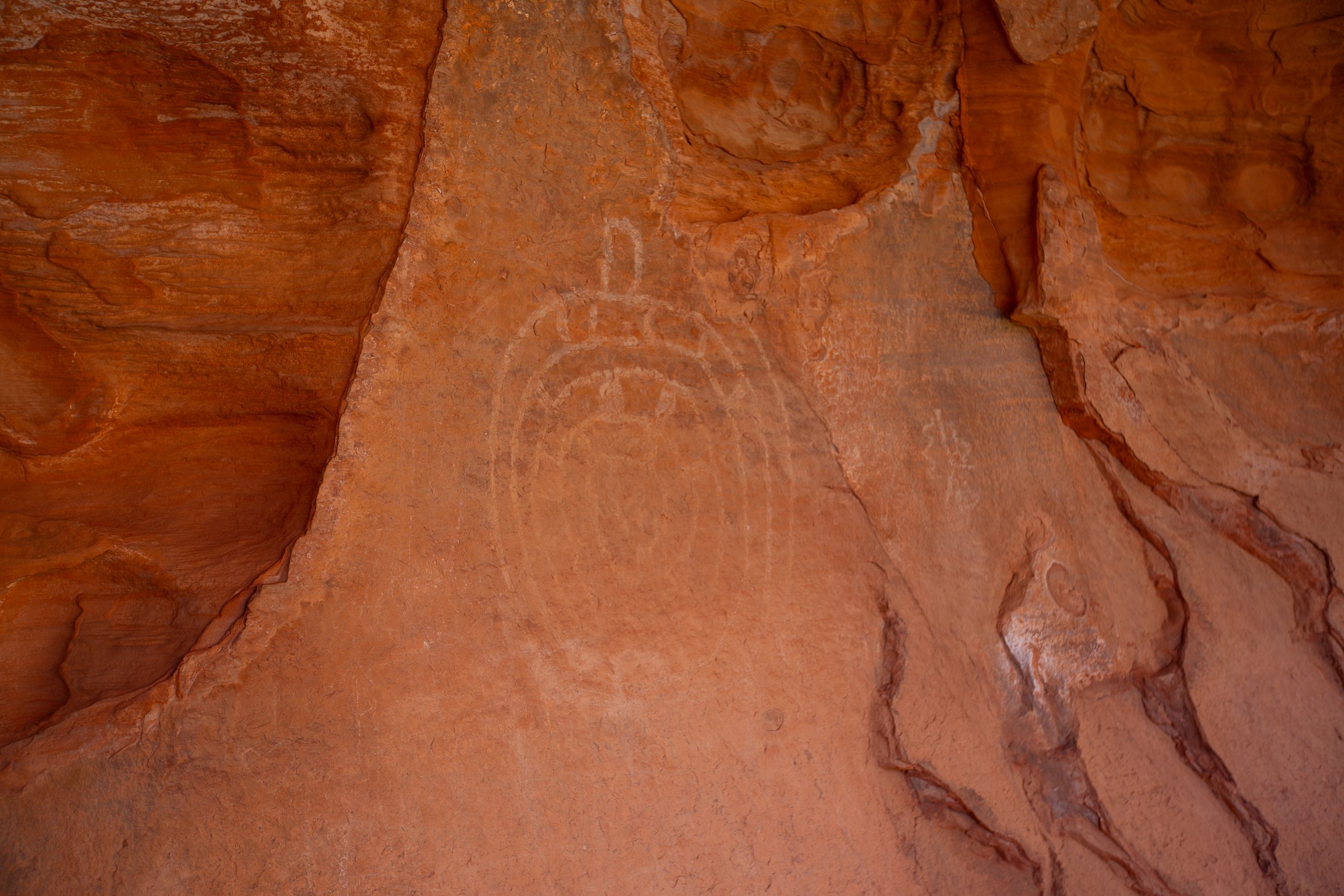Love Story in 1902 | Sedona
Cathedral Rock Sunset
One of my favorite runs in Sedona begins not on a trail, but in a parking lot—specifically, the one tucked beside Freeform Coffee Roasters, a minimalist shrine to caffeine and sunlight. It was there I first discovered their Brazilian single-origin espresso—earthy, smooth, almost ceremonial. It tasted like morning clarity. Over time, I began parking there not out of convenience, but out of habit. Or maybe reverence.
From Freeform, I head south along Highway 179, following the earthy-red bike and pedestrian path as it winds toward Oak Creek Village. The first two miles are paved gentle rolling hills—passing through a corridor of sagebrush and low-slung adobe homes, painted in the same tones as the desert itself. The architecture feels humble, deferential—as if the homes are leaning back to give the mountains room to breathe. Some houses are simple, others expansive, their wide glass windows gazing east toward Bell Rock and Cathedral Rock, with undistracted panoramic views.
Courthouse Butte (left) and Bellrock (right)
Then, at just the right moment, the concrete ends. The trail becomes gravel, raw and red. This is the Bell Rock Parkway Trail. Bell Rock rises like a rust-colored sentinel, calm and colossal. At this point, if you're one of those people who came to Sedona chasing vortex energy, you might feel a tingle in your fingertips—or perhaps just dehydration, after all it’s already scorching hot. This, after all, is one of Sedona’s fabled vortex sites, where the Earth’s energy is said to spiral upward in subtle, invisible waves.
As a scientist, I remain unconvinced.
Vortex Center at Cathedral Rock
“It’s probably just good marketing,” a hiker I met once on one of my hikes told me. “There are vortexes all over the world. Sedona just marketed theirs better.” Perhaps that’s true. But even skeptics like me can’t deny that something shifts out here. Around mile six as I am looping around Bell Rock, my legs feel lighter. My breath deepens. My thoughts slow, clarify. I feel inspired to be and do something. Bell Rock is no longer a destination—it’s a companion. I complete the loop and turn back north.
Entering Sedona
Somewhere near mile ten, I notice it: a humble roadside sign, that reads: “Entering Sedona. Founded 1902.” Simple. Unbothered. But it stops me—not for its design, but for the question it whispers..
Somewhere near mile ten, I notice it: a humble roadside sign, that reads: “Entering Sedona. Founded 1902.” Simple. Unbothered. But it stops me—not for its design, but for the question it whispers: How did this place—now the last stronghold in America of crystal healing and cosmic alignment—begin? And more curiously: Wasn't it here before 1902?
It turns out, Sedona is not an ancient name passed down through indigenous languages. It is, in fact, a love story.
In 1902, a man named T.C. Schnebly, newly arrived from Missouri with his wife and two children, applied to establish a post office—which would, by extension, establish the town. He proposed naming the area after his wife: Sedona Arabella Miller Schnebly. The postal service initially rejected it for being too long (in line with a policy from the Bureau of the Fourth Assistant Postmaster General, which—favored short, one word town names). And so “Sedona” was born—not from mythology, but from love of wife and beautiful land.
Sedona
T.C. and Sedona Schnebly arrived in late 1901, settling on an 80-acre patch of land south of Oak Creek—land that now borders the charming boutiques and cobbled paths of the Tlaquepaque Arts and Crafts Village. They came west with hope, part of the larger wave of settlers propelled by the Homestead Act of 1862, a U.S. law offering up to 160 acres of "free" land to citizens willing to live on and cultivate it. For the Schneblys, it was the American dream—land, opportunity, reinvention. For the Yavapai and Tonto Apache, it was something else entirely.
700 year Old Cave dwellings
Long before this place bore the name Sedona, it was home to these Indigenous peoples. In 1875—just 25 years before the Schneblys arrived—they were forcibly removed by General George Crook, whose name, in a bitter twist of historical amnesia, now marks local hiking trails. The very trail once used to march them from their homeland is now traversed by tourists in search of views and vortexes. The Yavapai and Tonto Apache were relocated to the San Carlos Reservation in southeastern Arizona. Today, their descendants are part of the Yavapai Apache Nation, carrying forward their heritage in a landscape that still remembers—but does not always say so aloud.
The First Americans Petroglyphs
By the time I return to Freeform Coffee—sweaty, red dust-coated, and 12 miles lighter—I’m no longer thinking about my pace or hydration. I’m thinking about how places gather meaning, and how easily that meaning slips through. How history is often overwritten by the stories we prefer to tell.
Freeform Coffee Roasters
I sit with my espresso—strong, floral, faintly bitter—and gaze out at the red rocks, their silence older than every name we’ve ever given them. They have watched generations arrive and disappear, empires built and unraveled, all without blinking. They observe quietly as our human dramas play out—and will go on observing long after we’re gone.
Sedona is, without question, beautiful. But what began as a casual morning run has turned into something else: an uninvited meditation on love, erasure, myth, and memory—and the strange privilege of moving freely across land that once was, and in many ways still is, not mine.
The Sunrise Over the Cathedral Rock









